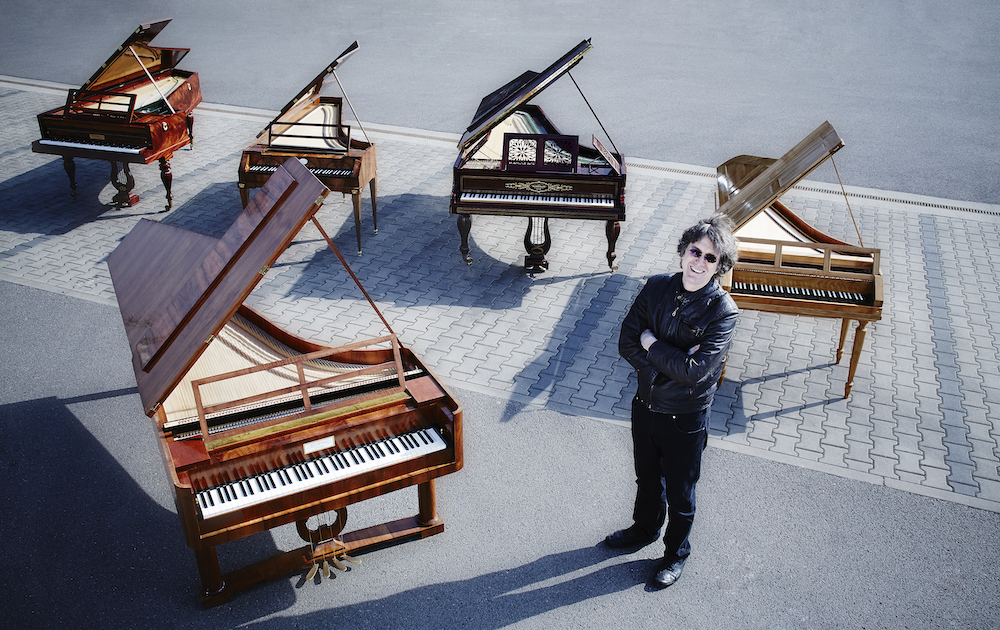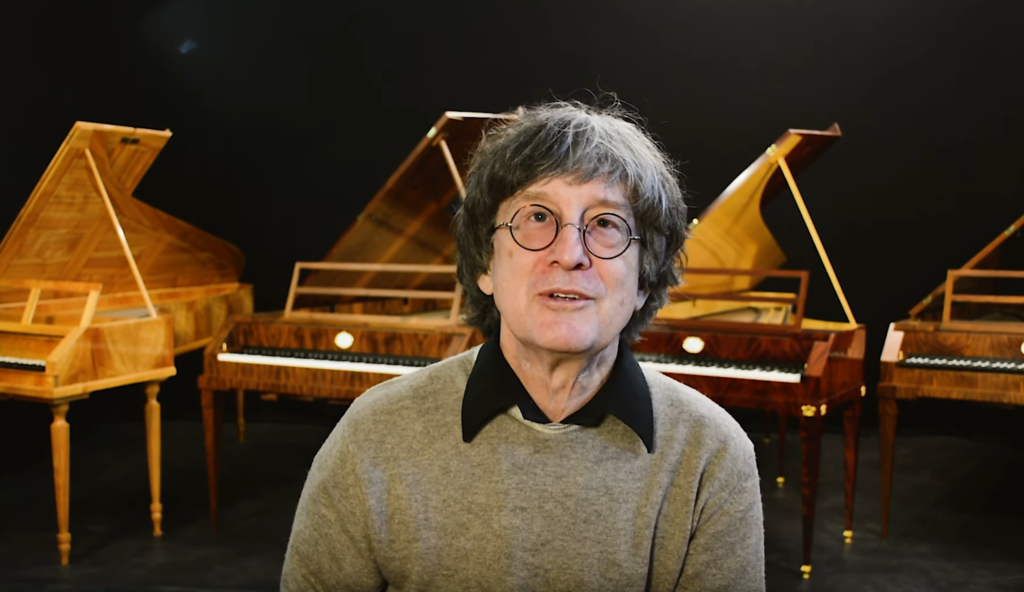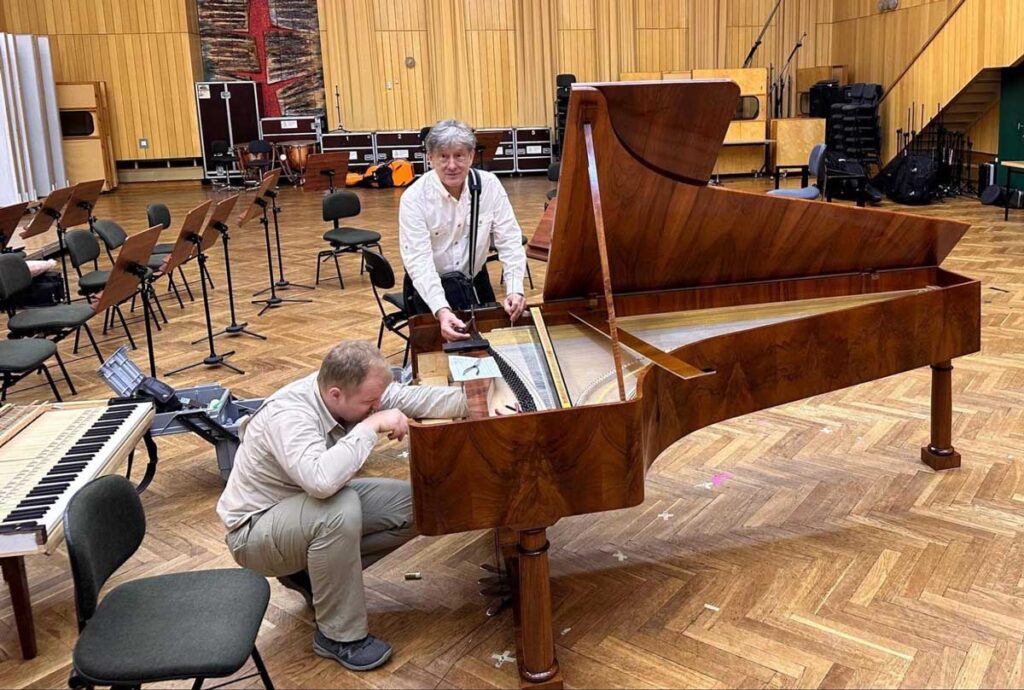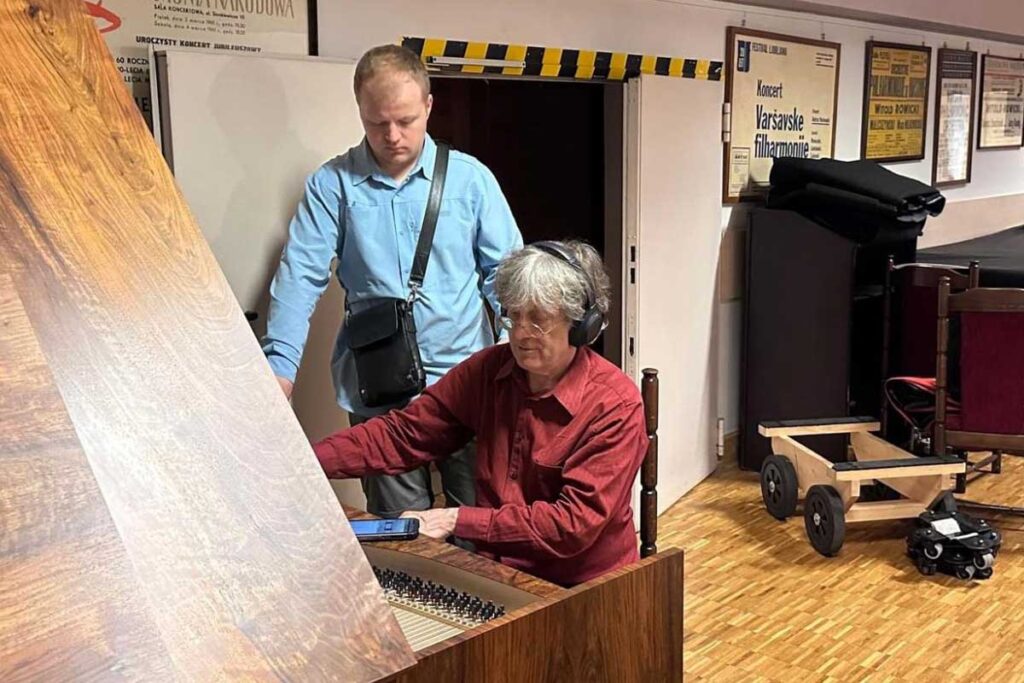Embracing the Past Now – The Messenger Paul McNulty in Warsaw
The Chopin Institute engaged the highest possible expertise for the instrumental part of the 2nd International Chopin Competition on Period Instruments which included inviting historical instrument builder Paul McNulty. We asked Paul a few questions about the Pleyel renovation as well as his role as a technician and instrument provider during the competition.

Renowned McNulty has a close relationship to Warsaw as he was the one assigned for the renovation of Chopin’s last Pleyel grand piano in 2021, exhibited at the Chopin Museum in Warsaw. During the competition participating pianists had a unique chance to select between six instruments for their different works.
Piano Street: Dear Paul, you were not only called on as an expert on maintenance and preparation during the competition, but you were also providing two of your own built instruments. What can you tell us about them?
Paul McNulty: Yes, I had two new instruments available during the competition, a Graf and a Pleyel which, by the way, were built by my long experienced team, led by young master Sergei Kramer. The winner Eric Guo used the Pleyel for his tour immediately following the competition. We met in Prague, Dresden, Madrid, Brussels and Vienna for a series of concerto and solo concerts, all with standing ovations, four or five encores every night. There was also my 1825 Buchholtz copy used in the competition. Buchholtz was Chopin’s Warsaw builder, a great master, trained in Vienna, about whose piano Chopin commented on the “pleasing touch and alluring sound”.

PS: A lot of international press attention was given your renovation of Chopin’s last Pleyel in 2021. Is it possible to call back such an old instrument from the dead so to speak, and make it playable again?
PMN: Chopin’s 1848 instrument stayed in the Chopin family in Warsaw from 1850 until 1924 when it was donated to the National Museum, so it had a gentle life. Playability in this case meant new strings and keyboard regulation, ten days’ work. I recently put into concert state an Erard of 1839, in Castle Pszczyna, for another concert in Eric’s victory tour. This piano is also exceptionally well preserved, so the job did not involve structural repair, only a week of keyboard and hammer work.

PS: We have enjoyed your collaborations and recordings with artists such as Ronald Brautigam, Kris Bezuidenhaut, András Schiff for instance. Which considerations do you have when building a copy of a period instrument and how close can we get to the actual model? Or, should that even be the ambition?
PMN: When the phone rings with a client needing a certain piano, I begin the research. The idea is to make as close a copy as possible, to make something the original builder might approve of, and there are a number of parameters to measure that any builder has to consider when designing a piano. There is no advantage in improving the design, or in changing proportions. Certainly the original builders made changes during their period of production, but surviving instruments, those which did not become firewood, illustrate that the builder made a successful instrument, and it isn’t fair to the original builder, or his city, his living composers, to look for ways to improve it. Any instrument you find was made in the dozens, hundreds, and the details were already refined in the example you have. There are rules of common practice among the Viennese piano builders, particularly in the hammer mechanism, and discovering these by research has been most helpful, a defining step in tone production.

PS: With your vast experience of the history of the piano, which brands and technical innovations were the most crucial for the development towards “the modern piano” in your opinion?
PMN: Sebastian Erard invented the modern double escapement mechanism in 1821, and this is in every modern piano today. The development of stronger wire was followed immediately by stronger piano frames, and Boisselot in 1846 made for Liszt a piano with 30,000 kilos tension, similar in this regard to the modern piano. This required Boisselot to build a complete composite metal frame, analogous to the Steinway and Bechstein full cast iron frames of the 1860s. The music wire of 1846 was not yet as strong as modern, so the Boisselot has a bit shorter mensure than modern, but the strings are quite thick, and the tension is unusually high for this period. Boisselot was deeply connected with Franz Liszt, so he made the most powerful instrument possible.
Paul McNulty about Chopin’s last piano Pleyel/Leather Hammers/Fortepiano Mechanic
Would you like to know more about the last piano played by Chopin – Pleyel 1848?
Part 2 interview taken in December 2021:
Playing Chopin’s last Pleyel. Pianist Dmitry Ablogin talks and plays Chopin’s last works, Opp. 45-64.
Comments
I own a C Bechstein 6’7” concert grand dated inside as 1871. When I contacted them about the history of the piano, giving them the numbers I found inside as serial numbers. They told me that the numbers I gave them belong to an upright piano. I’m wondering if it might have been a common practice in repairing these pianos to replace parts from totally different types of pianos from the same manufacturer? Any help you could give me would be greatly appreciated
McNulty mentions Steinway and Bechstein using full cast iron frames by the 1860s. They adopted this technology from Chickering of Boston. Jonas Chickering patented his first full single-piece cast frame design in 1840, and put it in production soon after. The Chickering factory was the second-largest building in America, after the Capitol in Washington, D.C.